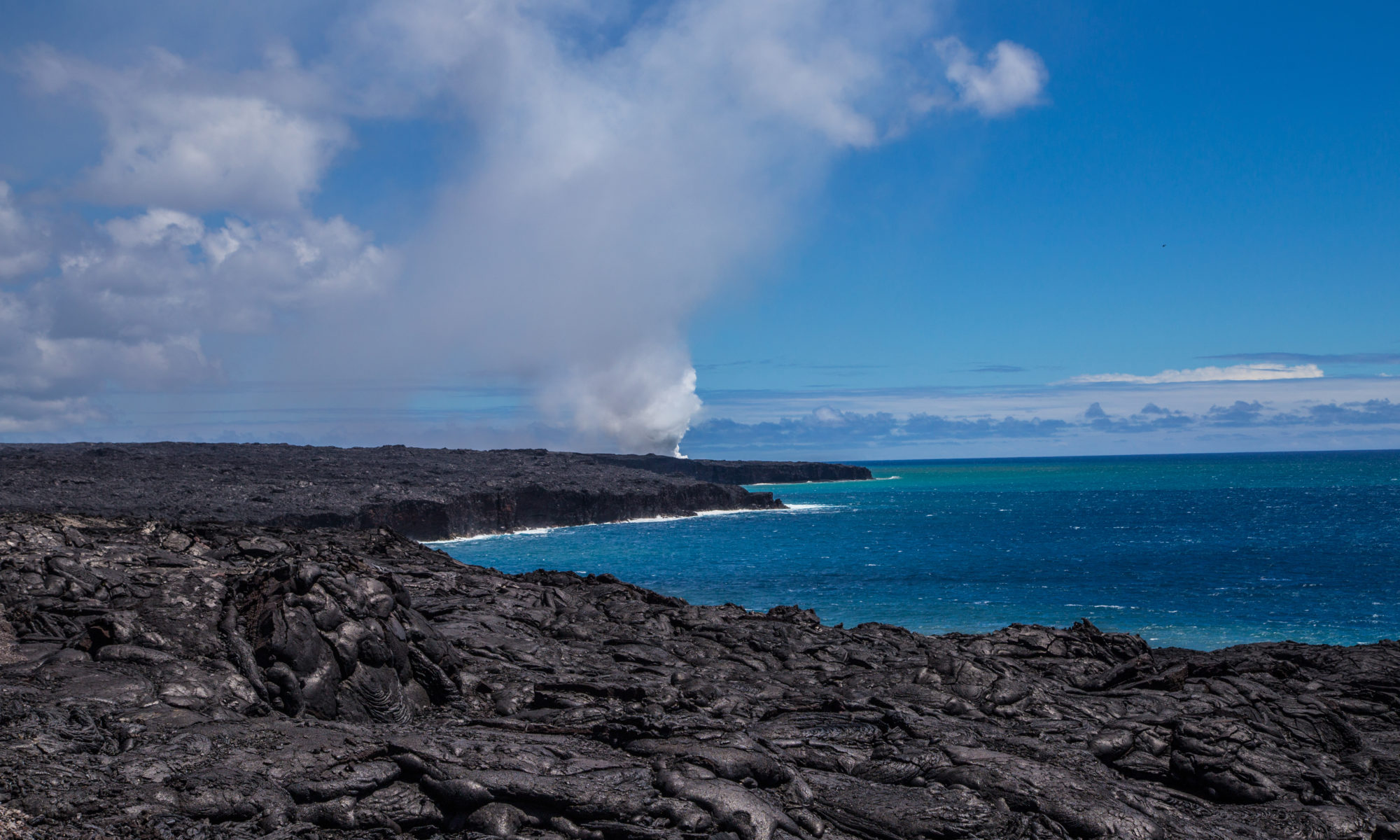Featured image: a field of basalt in Hawai’i Volcanoes National Park (National Park Service, public domain)
Paper: Potential CO2 removal from enhanced weathering by ecosystem respnses to powdered rock
Authors: Daniel S. Goll et al.
In the 2015 Paris Agreement, nations pledged to work toward a common goal of limiting global warming to less than 2°C compared to pre-industrial times. The Agreement doesn’t specify how the signatories should do this, though: levy a carbon tax? Shut down coal-fired power plants? Use a stainless steel straw? According to the best available climate science, we will need to be doing all of the above and then some. In fact, meeting the target of the Paris Agreement will require negative emissions, removing greenhouse gases from the atmosphere via some form of Negative Emissions Technology (NET).
Despite the word “technology” in the name, many kinds of NETs rely on enhancing natural processes for the capture and sequestration of CO2. The most familiar example of a NET is probably planting trees (aka reforestation), but a new paper by Daniel Goll and co-authors digs into the effects of a less well-known intervention: adding basalt dust to soil.
Basalt is a very common, dark-colored volcanic rock which reacts with CO2 to form carbonate minerals. This reaction happens naturally all on its own as rocks on Earth’s surface slowly erode, but we can speed up the geologic pace of the process by mining basalt, grinding it into dust, and spreading it around. As an added bonus, basalt dust adds some useful nutrients to soil, like phosphorous, feeding plants that then take up more CO2. Goll and co-authors used computer models to predict how much CO2 we could sequester by applying basalt dust across different areas on land, and their models incorporated both the abiotic reaction with the rock and the effects of added nutrients on plant growth. They found that in theory, widespread application of basalt dust in very sparsely populated areas could remove tens to hundreds of gigatons of CO2 from the atmosphere per year.
Before we start crushing up basalt and tossing it all over the place, though, there are some caveats that Goll and co-authors describe. The costs associated with mining and crushing the basalt would be substantial, and greenhouse gas emissions from mining operations as well as the vehicles used to transport and spread the dust would partially offset the drawdown from the dust itself. Basalt dust would have to be spread over large areas across the globe, requiring some level of international cooperation, and the logistics of transporting tons of crushed rock to remote places would be highly complex. There’s also the question of environmental impact from adding basalt to soil, which is expected to be mainly positive but needs to be assessed in detail through further models and field trials.
I live in a coastal community, a place where rising sea levels and intensifying hurricane seasons are clear and present signs of a warming planet. Even if we could flip a switch and stop using fossil fuels tomorrow, we’ll be living with the consequences of anthropogenic climate change far into the future and poorer communities around the world will bear the brunt of the negative impacts. The work of Goll and co-authors shows that basalt dust could be an important piece of our negative emissions future as we work to meet, and hopefully exceed, the goals of the Paris Agreement.
Carbon to carbonates: capturing CO2 with rocks by Hannah Mark is licensed under a Creative Commons Attribution-ShareAlike 4.0 International License.

